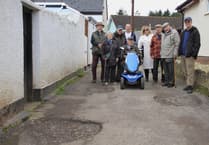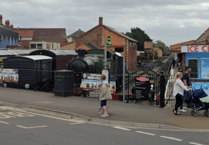VISITORS are being invited to step into a country Christmas in Dunster Castle and Watermill to embrace the seasonal traditions of the Luttrell family who owned the castle for more than 600 years.
From Saturday, December 16, to Monday, January 2 - except for Christmas Eve and Christmas Day - visitors will be welcomed by an impressive 11 feet tall Christmas tree and a spectacularly decorated inner hall laden with fresh garlands made by volunteers from foliage cut from the gardens.
The dining table will be laid for a 1930s Luttrell family Christmas lunch while the sumptuous library as been decorated in the Victorian style.

There is fun to be had for families in the morning room, where toys and games with multi-generational appeal have been laid out to play.
Elsewhere, visitors can try their hand at setting places for dinner in the blue kitchen.
Youngsters and the young-at-heart can have a go at spotting the knitted robins hiding around the castle.
Outdoors, the sub-tropical garden on the south terrace offers panoramic views of the Bristol Channel and surrounding countryside, while the river garden and natural play area offer a chance to let off some steam.

Those wanting to explore the local area can enjoy self-guided wintery walks, with routes available on the Dunster Castle website.
The Watermill Tearoom will be offering festive warm drinks and seasonal bakes from mince pies and gingerbread men to a less traditional mint chocolate blondie for those feeling adventurous.
The Watermill team will be milling on the December 20 with Dunster flour available to purchase for visitors making Christmas treats at home.
The Stables shop has gift ideas and caters for people looking for special finishing touches for Christmas celebrations.
The castle has existed since at least Norman times, with an impressive medieval gatehouse and ruined tower giving a reminder of its turbulent history.

Today’s castle became a lavish country home during the 19th century for the Luttrell family, who lived there for 600 years.
The terraced garden displays varieties of Mediterranean and sub-tropical plants, while the riverside wooded garden below it is a natural play area and leads to the historic working watermill.
More information is available on the National Trust’s website here.




